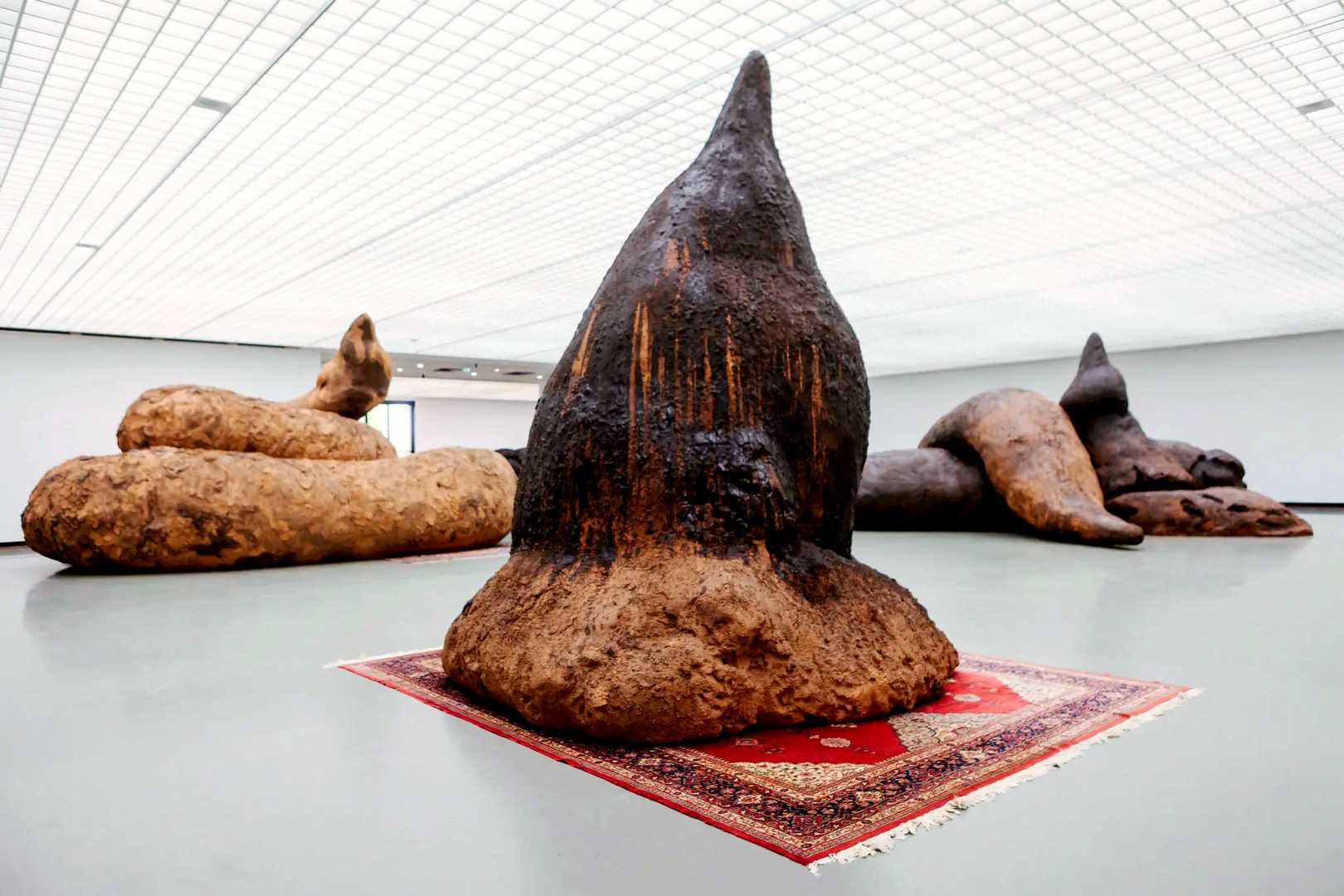Originally posted 2022-08-16 21:33:32.
Contemporary Art — perhaps better called ‘today’s art’, because all art is ‘contemporary’ at the time it is made, is shit. It has been shit for a long time; but it is not getting any better at all.
Towering over the carnage that is all that remains of gallery art in the West is the pixie figure of Marcel Duchamp. You may never have heard of him, but that doesn’t mean he was not important. For many, Marcel Duchamp was the most important artist of the twentieth century.
Now I am going to show my colours here; I have a Master’s Degree in Fine Art. And I have spent my life as a practising artist, in various media. So I am both academically and professionally interested in this.
So with that out of the way, why is ‘Contemporary Art’ so bad? And who the hell was Marcel Duchamp? The story is long, so bear with me.
While artists do have a tremendous sense of humour (usually) academics, gallery-owners, museum curators and all the other lovey-dovey hangers-on, do not. They are such terribly serious people. This causes problems when the two classes collide.
Another reason is that the ‘art’ we are talking about exists only in the West, and it is all about elitism. Pure and simple. All elitism depends on hierarchies — I am better than you — but this one is unlike most. It is not dependent on wealth or power, or even skill or knowledge. It is instead based on how well you can ‘feel’ the art. Your ability to ‘feel’ the art is measured in your responses to it, your smiles of ‘appreciation’, your little gasps of admiration. Unfortunately, nobody can teach anyone else how to do this, how to ‘feel’ the art. We cannot teach aesthetics and hope that might help, for beauty is no longer valued in art. Nor is craft skill, ability, or even the ability to communicate.
Lacking any objective standard or measure, we are left with only one option: to watch the ‘in’ crowd and clap like seals when they do. If we do this enough we might be able to predict when they will clap (sorry, do ‘jazz hands’ but you know what I mean) and if you do this well enough, you might become a part of the ‘in’ crowd and so be able to look down at the clueless oiks who are not. Did someone say ‘elitism?’
Concept Art was invented by Marcel Duchamp
What we call ‘ Contemporary Art’ today is actually ‘Concept Art.’ This was literally invented by the aforementioned Marcel Duchamp. It denies art’s basis in craft skills and instead, maintains that only the idea — or the ‘concept’ has value. In other words, the concept — whatever that might be — is the art, and all else is just so much fancy packaging. In a sense, art has become like the memes that are so popular on the Internet; a strange or funny idea encapsulated in a few words and (possibly) an image. The execution of the meme is irrelevant; it’s the underlying idea that counts.
But this, of course, is in direct conflict with our common-sense notions of what art is. We all know that art is not just an idea, it is a thing that can in some way be sensed and appreciated. Its value is not entirely subjective. It has to be made and so it must be subject to objective measure, not least in terms of how well it was made. All art has concept, so what is the logic in removing everything but the concept? Everything that makes the concept into something of aesthetic value? How can you remove what makes art art — and not just some glib meme — and still call it art? Outside the gallery, such an idea would be laughable. So how did it come about?
How did a dilettante French artist who made almost no work, Marcel Duchamp, come to derail ten centuries of European artistic culture?
Sense of humour
This is where the sense of humour comes in. In 1917 Marcel Duchamp, a French painter and dilettante, was playing with Cubism. He wasn’t really a Cubist, nor was he really a Futurist. But he liked to play around with their ideas. These interested him much more than their paintings and sculptures. Duchamp was just the kind of intellectualist that the fan boys and girls of ‘Contemporary Art’ love so much.
There was at the time in France a tradition that new artistic fashions would be formed by the artists refused a place in the Annual Exhibition of the National Academy, in Paris. The Impressionists had started this, when, after their work was refused, they mounted a rival exhibition in protest, the so-called Salon des Refusées. The Fauvists (the Wild Beasts) did the same thing.
Duchamp circumvented this by making a joke. He submitted an old urinal for exhibition, called it Fountain and signed it ‘R. Mutt’. Now anyone who has lived in France or understands the French, gets this. It’s a rude joke. It’s saying ‘You idiots don’t know what art is; look, I can submit an old pissoir and call it art, and you’ll believe me.’
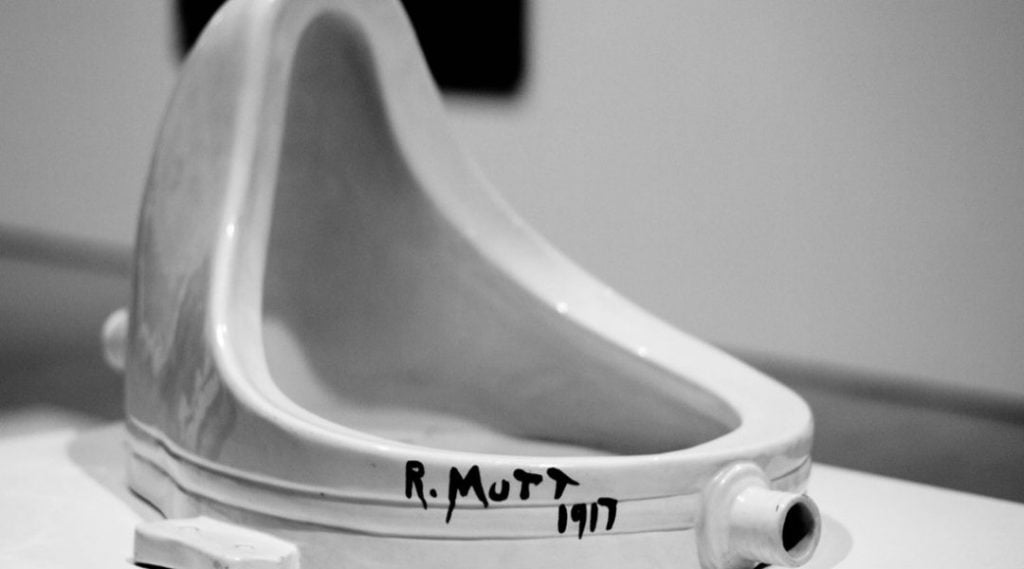
And they did. So terrified was the art establishment by then of being wrong-footed by the inception of a new artistic fashion, that they would indeed have accepted anything. Duchamp was right. But what he was right about was that the Academicians had not a clue what art was, by causing them to exhibit something that obviously was not art, as if it were. The Academy has never recovered, although it took decades for the rot to really take hold.
Duchamp was a dilettante and a poser but he was also a talented, intelligent and well-educated man; and he was French. He immediately saw that his crude joke had been swallowed hook, line and sinker, and with any luck it would be a dripping roast that he might sup from all his days.
It was and indeed, he was actually commissioned on at least two occasions to produce an edition of Fountain, which he fulfilled by nipping down to the hardware store, buying however many urinals were required, and then signing them. He made absolutely no effort to replicate the original at all. But this, of course was all right because he had not made the ‘original’ either. It was a ‘found object.’ See how the madness self-perpetuates?
Duchamp dived enthusiastically into the same broad stream of nihilist existentialism that motivated other French intellectuals like Sartre and Camus. He began to explore his own joke as if it were, indeed, a serious question. Again, this is something that anyone who knows the French will find both amusing and typical.
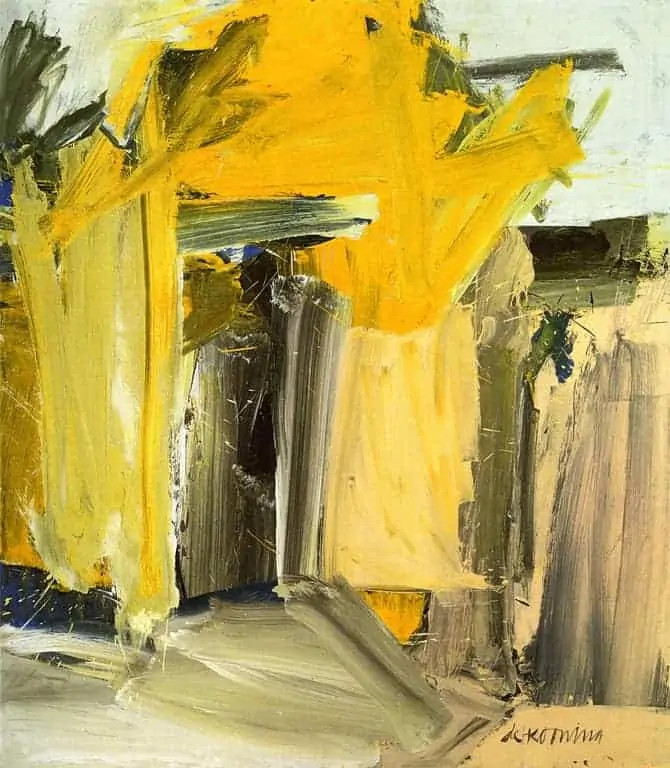
The Second World War intervened and Duchamp, along with many others, decamped permanently to the USA, where he was welcomed into the New York art scene. While this was stagnant during hostilities, soon after the their closure, the scene caught fire again, this time with a genuinely US American art form, Abstract Expressionism. This, in some cases, amounted to throwing cans of house-paint at a canvas and hanging it on the wall. It was definitely not a European form, but it sure had hubris. It was the loud plaid jacket of Post-War culture.
French humour
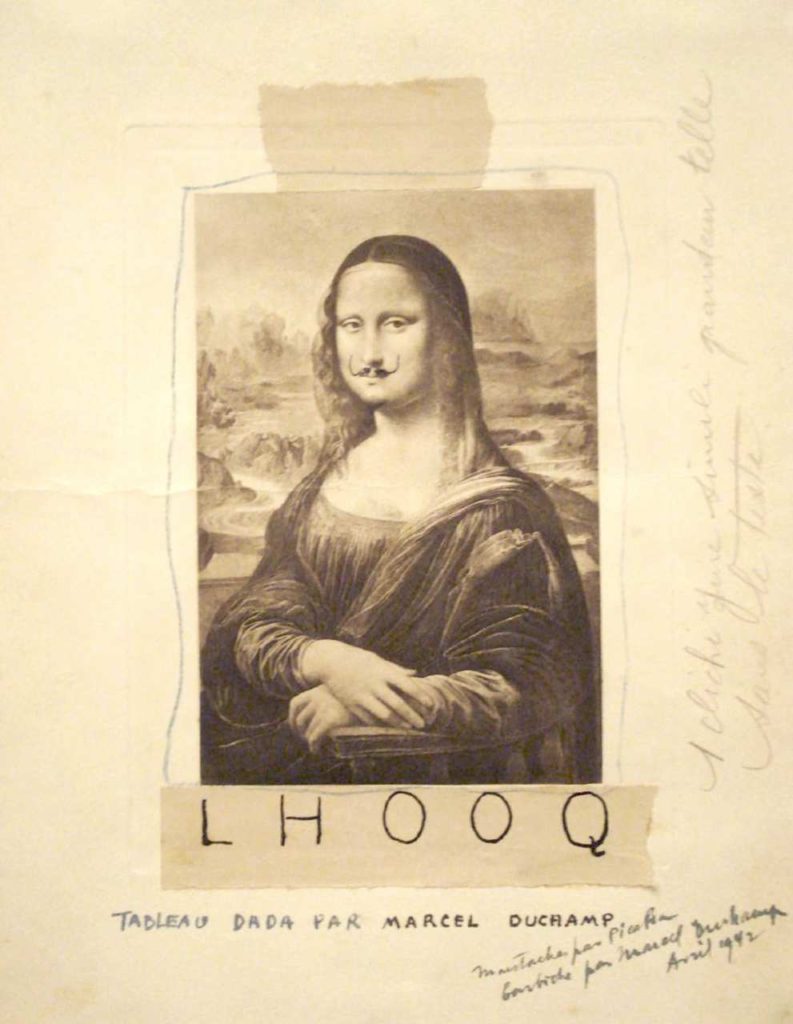
Now Anglo-Saxons, and particularly USicans, really don’t get the French sense of humour — or the French — at all. They could never understand why a respectable French professional might steal a can of tuna from a supermarket and then end himself laughing. And French humour is altogether too concerned with faeces and urine for a USican to stomach.
These are, after all, the people who routinely block up toilets from Istanbul to Djakarta because they can’t bring themselves to wash their own backsides. A people who flush the toilet while they piss so the sound of it is masked, rather than after they’re done, like a normal human would. A people who mutilate baby boys’ penises so they won’t masturbate. Irony doesn’t really work on people like these.
So dealing with the French, whose humorous obsession with bodily fluids and sex is legendary, is just too much for them. As a result, Duchamp’s joke was taken seriously. He was still marginalised and he was never one of the inner core of New York artists, but his influence was seminal. Perhaps the most grandiose of his followers was ‘Wrapper-man’ who went by the name of Christo and liked to wrap up things. Any things, up to and including tracts of landscape.
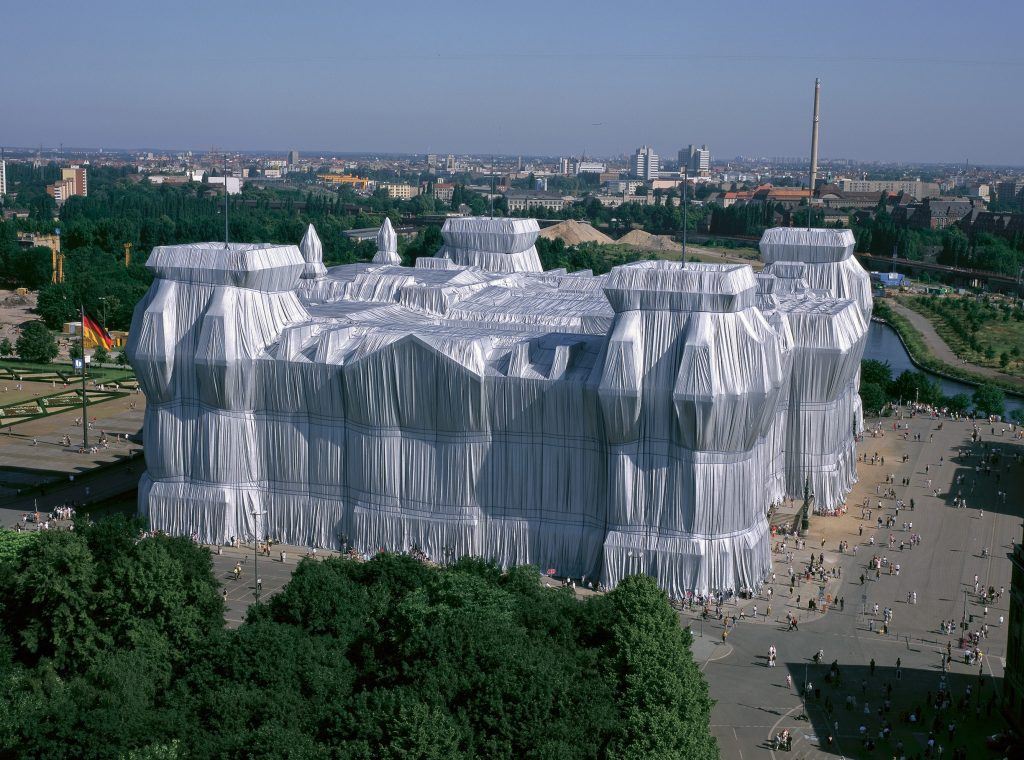
Now that he was a serious — and influential — artist and not just a fringe dilettante with a rich daddy, our man Marcel Duchamp had some thinking to do. What had he created? What is art? He’d posed the question, without really meaning to, but had resolutely refused to address it; he’d been too busy posing.
Homage to Marcel Duchamp
I was as fascinated as most of my generation by Marcel Duchamp. The above was part of an exhibition called ‘Homage to Marcel Duchamp’. 1983.
Duchamp didn’t have an answer, so he stopped making art. He had never been very prolific; compared to the work of Picasso, Marcel Duchamp’s is tiny in quantity. He had — like Picasso and Matisse — never had to make money to survive from art; he could take it or leave it. So he left it and, ostensibly, took up playing chess.
Chess was not his only activity, however, although it was his only public one. In private, he wrote and, at the same time, began work on the biggest single work of art of his life.
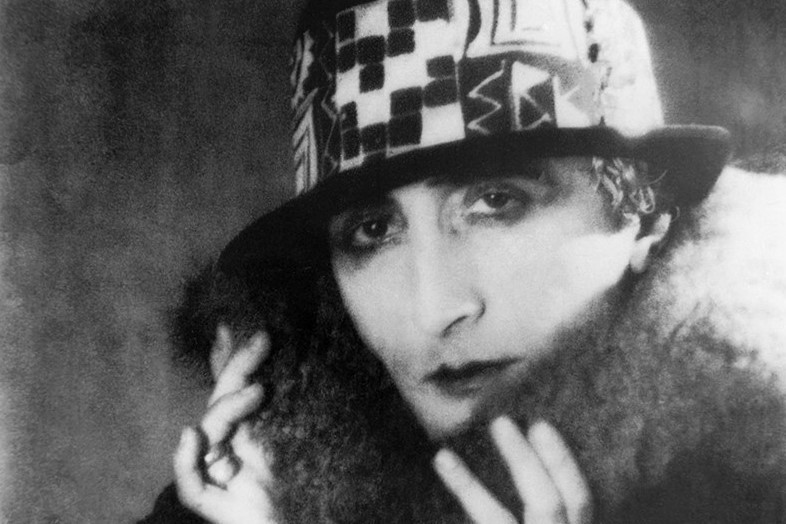
Marcel Duchamp was a writer, not an artist
Marcel Duchamp had already betrayed his true nature; he was a writer, not an artist. For him, ideas were more important than objects. He refused artwork because it involved making things, which he saw as bourgeois. The function of a piece of art is to serve as an object of status and Duchamp, for all his middle-class upbringing, affected the same detestation of all that is bourgeois that the French are famous for.
But if art objects — the things you hang on the wall — are bourgeois and so beneath the artist (Marcel Duchamp was elitist to his boots; the paradox of being French) then what is acceptable? Answer: ideas. Only pure intellect and its product. Painting was to be eschewed, not only because of its craft background but also because the objects it produced — paintings — were so insufferably middle-class that they were just too tedious to contemplate. Nobody with any Marxist sensibilities could possibly bring himself — or herself, of which more later — to make the stuff. Playthings and status symbols for the bourgeoisie? How infra dig.
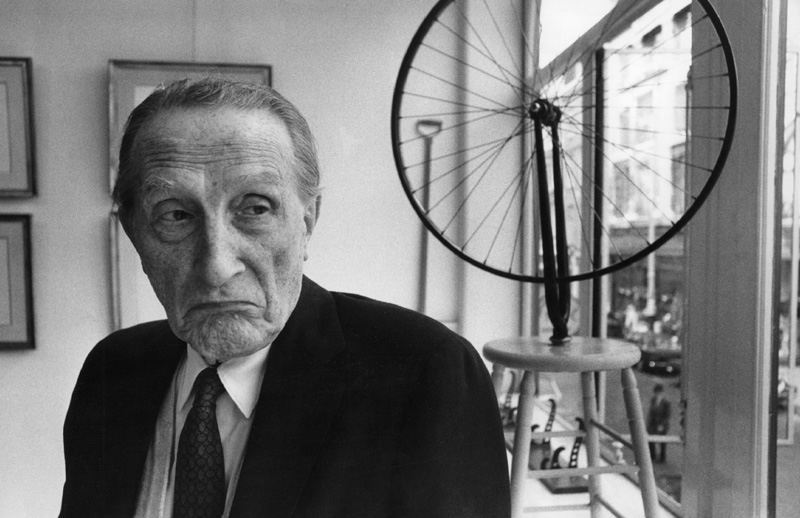
The problem was that Marcel Duchamp was a dilettante. He wasn’t serious about anything, least of all art. The raw guts and ooze of Michelangelo would have horrified him. Duchamp, as evidenced by his alter ego, Rrose Sélavy, was a cross dresser, what we would today call an autogynephilic transvestite. His rejection of life and lived experience in favour of secrecy and the illusion of chess-playing may have been partly an attempt to deny a sexual passion that motivated yet disturbed him.
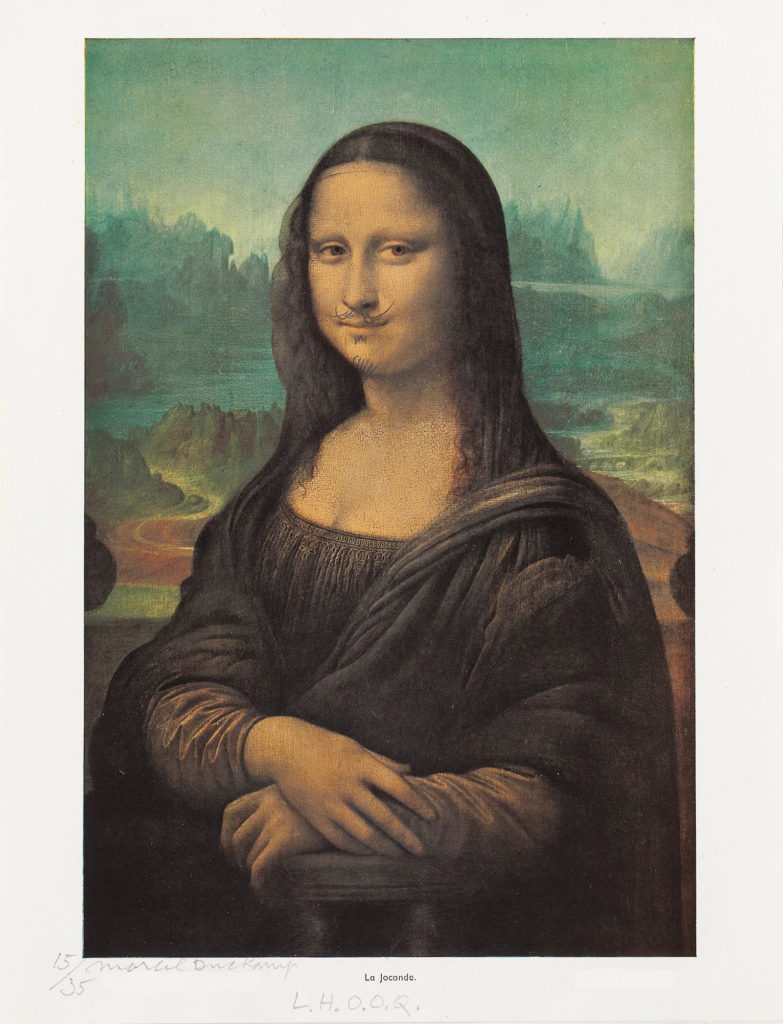
Be that as it may, Marcel Duchamp, having accidentally posed the question, had no answer. He wrote the Green Book, which tried to resolve this, but ultimately this self-revelation as a Machiavellian manipulator of the art scene was rejected and it is almost impossible to buy a copy today — which one might consider surprising; after all, he was, allegedly, the most seminal artist of the 20th century.
His other work — made in secret while he ostensibly devoted himself to playing chess — was a room, which could only be viewed through a tiny hole. Everything in it was carefully arranged and it was intended to be a kind of narrative, an exposition of the life of the artist. It was, if you like, an autobiography in visual language, but it was only discovered after his death.
So, in Marcel Duchamp we had a paradox — a talented visual artist who rejected visual art, because its product was bourgeois.
During the 50s and 60s, Duchamp was considered a curiosity by the gallery art scene, which, after all, he had rejected. As far as it was concerned, he had once been important but had stopped making art. End of. The era was, in the West, obsessed with the new Abstract Expressionism which was being promoted by, amongst others, Clement Greenberg. It was brash, bright, almost puppyish in its gleeful self-confidence; the ideal art for a nation that had — it believed — literally just saved the world.
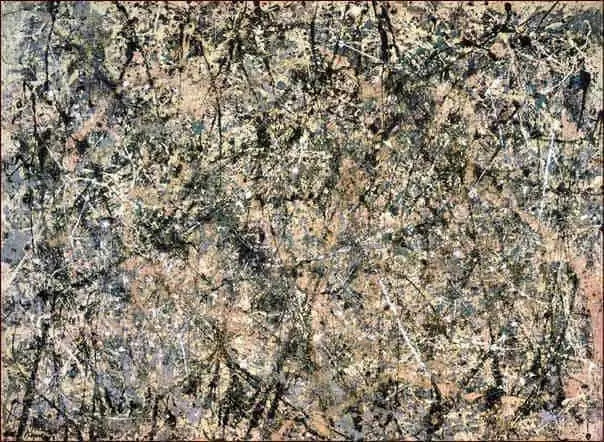
This was not to last, because we had the 1960s, which were a cathartic crisis of confidence that affected not only the United States but much of Europe too; well, Western Europe. The east was already under the iron heel of the Soviet boot and had other things to worry about. In the USA the trigger was Vietnam; in Britain the End of Empire and Northern Ireland; in France the loss of its colonies, particularly Algeria. This was literally a part of France, a full Département since 1848. Losing it was to the French like losing Texas might be to a US American.
This crisis of confidence gave us the 1960s, the most revolutionary period the West has ever seen, culturally at least. In all the arts, wild iconoclasts took over. What were gallery artists to do? It was in this milieu that Marcel Duchamp’s ideas began to take root.
The problem came to a crunch in the 1970s. Art was perceived as elitist and so deeply at odds with the prevailing zeitgeist. Worse, it was part of the Old Order, something that had to be swept away. It symbolised the salad days of the 50s and early 60s, the Boomer Years, and it was irrepressibly bourgeois. It was just not to be borne, if one were a young revolutionary.
Unfortunately, Marcel Duchamp’s nihilism is toxic and corrosive. If all art is a sop to bourgeois elitism, then no art is worth making at all; and so arrives the moment when Duchamp’s joke began to realise its all-too-chilling potential: if all art is shit, then one might as well just exhibit shit. (And believe me this is actually a recognised genre.)
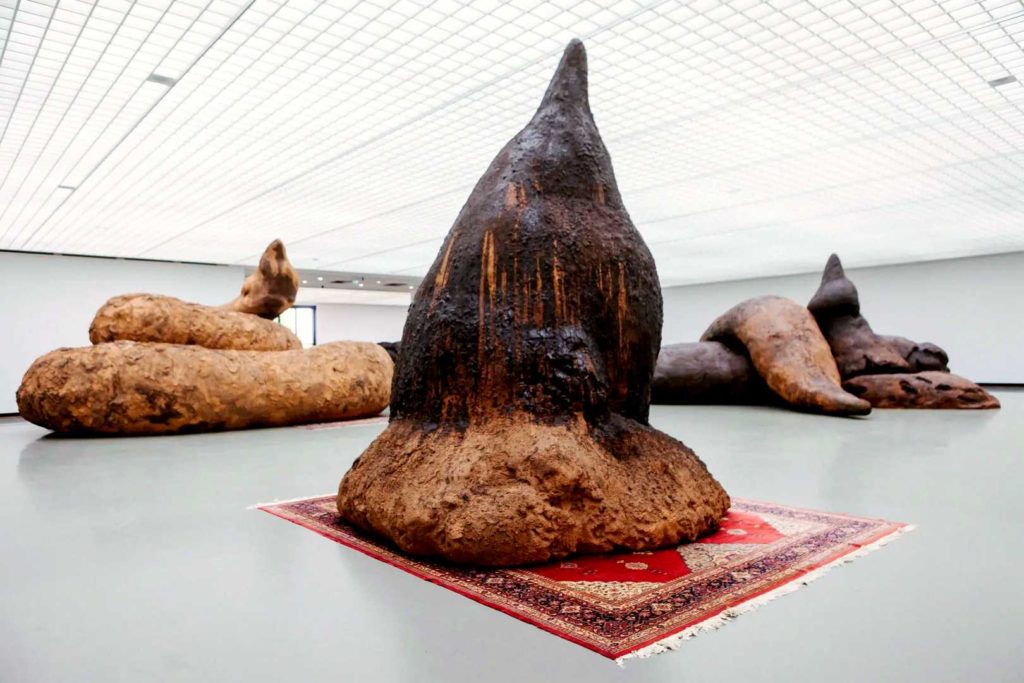
This pile of shit is the work of Gelatin, Wolfgang Gantner, Ali Janka, Florian Reither and Tobias Urban, who also created such wunderwerks as
a gigantic human objectcopier (Tantamounter 24/7, 2005); a 50-metre-long pink rabbit in the Italian mountains (Hase / Rabbit / Coniglio, 2005); a sculpture of frozen urine for the 1st Moscow Biennial (Zapf de Pipi, 2005); a lake with rowing boats on a terrace of the Hayward Gallery, London (Normally, Proceeding and Unrestricted with Without Title, 2008); a sculpture of a gigantic nose by the Danube near Sankt Lorenz in Austria (The Wachauer Nase, 2014) and a hundred illuminated balloons in a cave in Puerto Rico (Cave Show, 2014).
https://www.boijmans.nl/en/exhibitions/gelatin
If that doesn’t tell you how bad things have become, then you are beyond all hope. Why learn to draw? Why learn to sculpt? Why study anatomy? Why even bother to learn how to compose a photograph? Today’s artist is not meant to make things. She or he is just meant to contribute to a flow of intellectual ordure. Just shove your bed in a gallery and say ‘I fucked on this’ or, better still, get someone else to make the damn stuff.
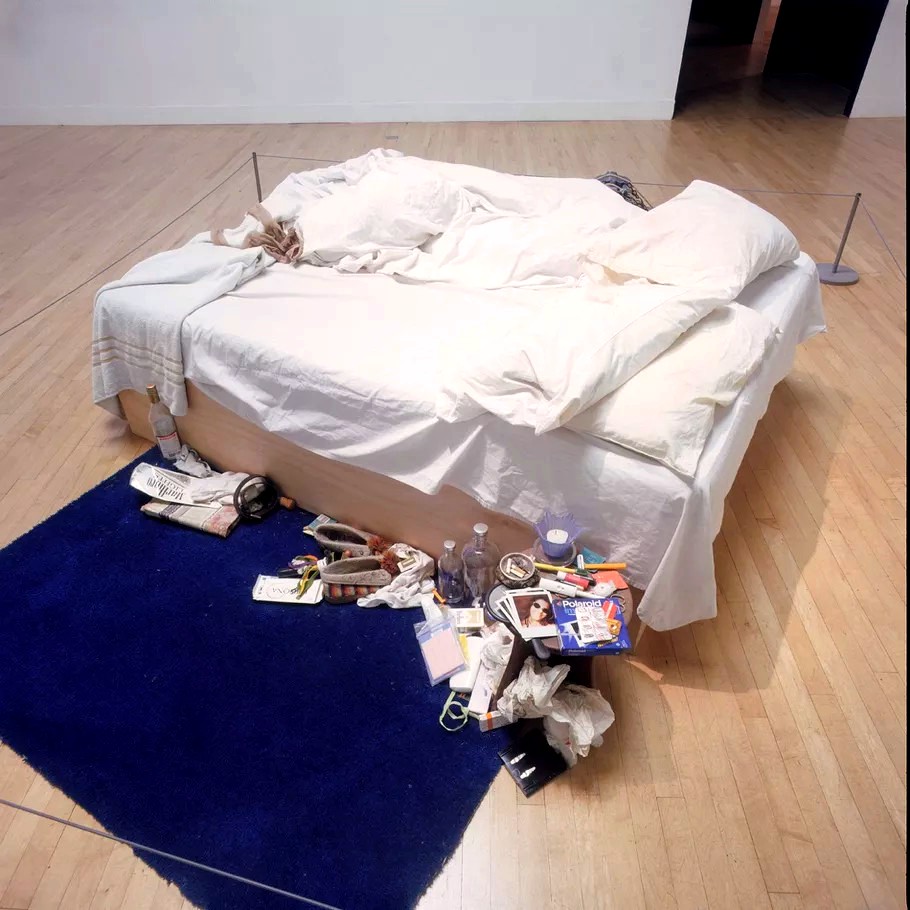
You don’t even have to give them a drawing: just tell ’em on the phone. After all, what it actually looks like is irrelevant; a concern with such things reveals one’s bourgeois mentality. It’s the idea that counts, not the object, you clod-hopping dolt.
So throw a pair of spectacles on the floor in a suitable gallery and see how long it takes to gather a crowd — and that, literally, is where ‘contemporary art’ is today. Marcel Duchamp was right.

Conundrum
We are left with the conundrum, however: why is anyone taken in by this patent bollocks? Why are millions upon millions of tax pounds, dollars, Euros, you name it, squandered on this utter garbage (all too often literally)?
It’s because nothing appeals to the bourgeoisie more than contempt for their own bourgeois natures. There is nothing the middle-class male likes more than to be insulted and humiliated –especially by their perceived ‘betters.’ And if they can make money from this nonsense, then artists can hardly be blamed for serving it up on steaming trenchers.
Gallery Art is a market
Remember: the gallery art market is a market. It is driven by money. It is not driven by ‘aesthetic sensibility’ or anything so polite, but by filthy lucre — the money that goes into the artists’ pockets yes, but that which gallery-owners grow fat on, which curators pay their mortgages with, which ‘art correspondents’ fund their spritzer parties with. ‘Art educators’ are paid to train people to believe this crap is art, by the sale of the crap itself. It is a horrible hegemony fuelled by money, in which audiences just don’t matter.
There is no other form of artistic endeavour in which the audience has to be told how to appreciate the product. There is no other art form wherein the artist gets paid eye-watering sums of money, even if nobody ever looks at his (or her) ‘work’. Yet that is where gallery art is, today.
Gallery art has always been about money; but here the deception is complete. There is no value in an art object and there never was; there is only value in its perceived worth as an item of art. So in order for it to have value, then it must be lauded by the so-called ‘experts’ (of which class, lest you forget, I am one) whose job is to tell people what they should like.
Sea-change for the worse
To make matters — already bad — worse, through the 1980s and on, a sea-change occurred in art education in the UK. Art Schools, which were in the business of training people to Make Things, became subsumed within Universities, who saw them as cash-cows for the milking of. In Britain this occurred because high-school art teachers, rightly, complained that, because they only had a Diploma rather than a Degree, they were unfairly paid less than other teachers. The solution employed was not to deal with the pay structure within the teaching profession — that would have been much too simple — but to start awarding the people trained in Art Schools Degrees.
This, however, meant that the Degrees had to be ‘validated’ by Universities which, in the UK, were the only bodies able so to do; so while I served my undergrad years at Edinburgh College of Art, my degree is actually from Heriot-Watt University. It wasn’t long before the massively larger and more powerful Universities began muscling in on the art education gravy-train.
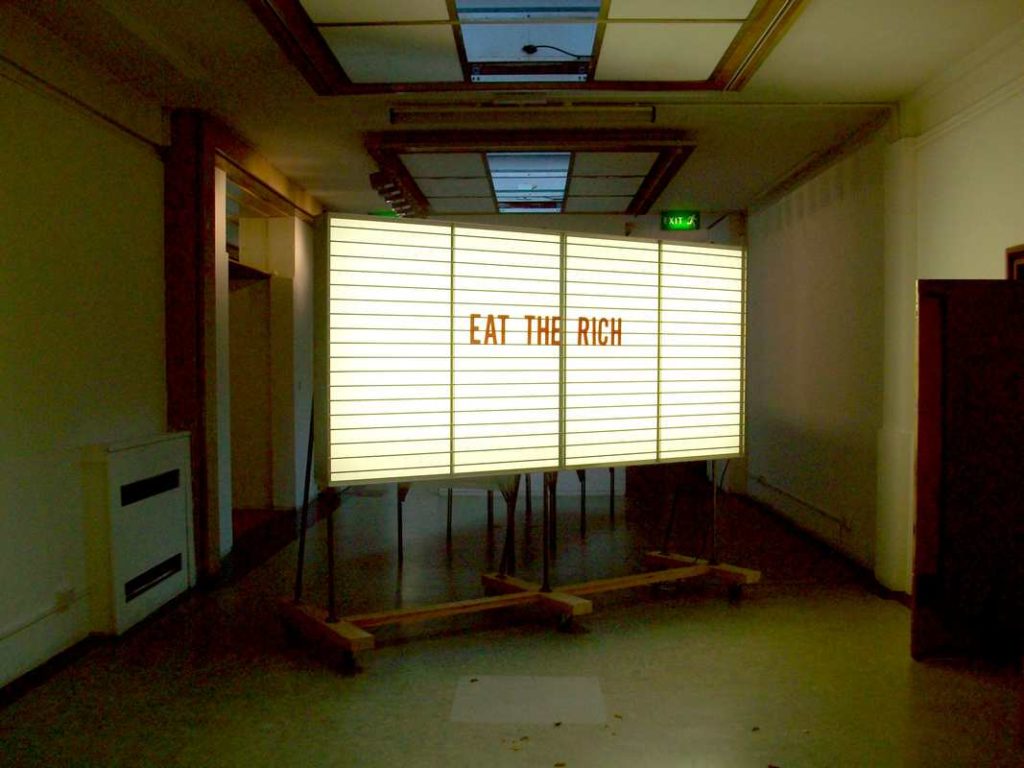
That was a catastrophe. Art Schools existed to teach people to think visually and materially. They grew out of the nineteenth-century ‘Arts and Crafts’ movement and their focus was on making. Universities exist to teach people to think intellectually — well, they used to, anyway. They do not begin to understand the notions of ‘craft’ or ‘making things’. The notion of ‘thinking through making’ is so alien to them that it might as well be Martian.
Why should they concern themselves with the visual? It’s not their role. But in taking over the Art Schools, they destroyed completely their reason to exist and, indeed, the possibility that they might exist at all — and they drove a stake right through the heart of art itself.
We now live in a world where ‘fine’ artists are not required to learn how to draw or paint; many could not if they tried and to be frank couldn’t take a decent photograph if you set the camera up on a tripod, composed the picture and told them ‘Take that.’ Indeed ‘Art educators’ spend a great deal of time destroying the natural ideas that most people have about what art actually is — painting, sculpture, photography, whatever — and replacing it with the terminally stupid notions that underpin ‘Contemporary Art’. Terminally stupid, and foreseen by the arch prankster, Marcel Duchamp.
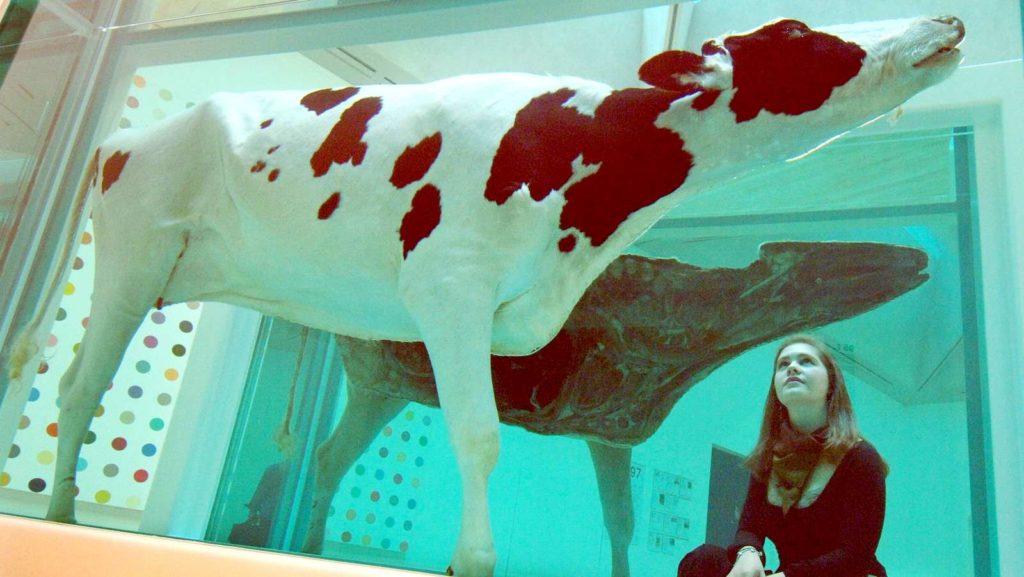
Bourgeois concerns
Aesthetics, beauty, composition — these are all prissy, bourgeois concerns that the young ‘fine’ today artist is trained to eschew. The visual is irrelevant: only the conceptual matters. That this is a conceit of massive proportions is ignored; young artists never learn the discipline most suited to such an approach, of being writers.
Instead they cobble together pretentious tat and call it ‘art’ — why? Because learning to be a writer involves learning the appropriate craft skills, and of course, no true Conceptual artist would ever do that; it would be bourgeois. Marcel Duchamp would never have approved. Why waste years developing the linguistic skills to be a poet when you can just write ‘This is art’ on a post-it, stick it on a wall and get paid for it?
And there we have it: the ideal capitalist scam. Consumers are sold totally valueless objects (if they are even material) on the advice of the very class of people who make their livings selling them. What a wizard marketing idea!
The fact is — and I have spent the last four decades finding out — that nobody can define what art actually is. For every single artist it is something different. What we can say with absolute assuredness, however, is what it is not.
It is not a pair of spectacles on the floor of a gallery. It is not an unmade bed. It is not a pile of bricks. It is not a neon sign saying ‘Eat the Rich’ or a cow cut in half and preserved in formalin. It is none of these pretentious panderings to bourgeois self-loathing. In other words it is none of the glib, facile, self-indulgent crap that pollutes galleries of ‘contemporary art’ today.


